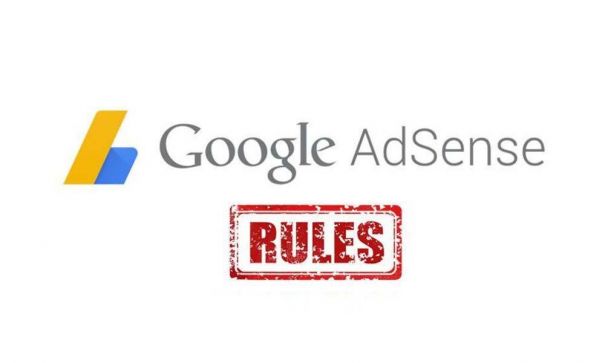Adsense Monetizing Rules That You Must Know - Viral Bao
In order to monetize your YouTube channel and make money from it, you need to enable the monetization feature on your videos and connect your Adsense account to it (in case you have one, else you can sign up for it). Adsense is a Cost per click advertising program which allows you to include advertisements in starting of the video, when the viewer clicks the ad you get your share of money for advertising it. Now, whenever those ads roll at the starting of your video and someone clicks it, you get paid for that. While a solitary tap on a YouTube video may just yield a couple of pennies, those pennies rapidly add up when you have a great deal of audience engaging with the ads on your YouTube channel.
But it doesn't end here. YouTube recently put a restriction on who can make ad money from their video platform. YouTube announced in a blog post that it will not show ads on videos by those channels having less than 10,000 total views. Sounds a little bit of trouble for new creators aspiring to be in the YouTube Partner Program until they get 10,000 total views on their channel. It appears that the future aspirants won't be accepted into Partner Program until they fulfill the 10,000-view criteria.
So, here's a brief look on Adsense policies:
Rules on clicks and impressions on ads:
Creators and channel publishers are not supposed to click their own ads or use any unethical means to boost clicks artificially.
Clicks on the ads must be generated by a genuine user. Any trick that artificially generates clicks on ads is strictly prohibited. These unethical methods include, automated click generating tools, the use of bots or any software so as to increase clicks.
Creators/video publishers can never ask viewers to click their ads or use any unethical methods to obtain clicks. This also includes,offering compensation to viewers for viewing ads or performing searches. Encouraging users to click on ads using phrases like "click the ads", "visit these links" or any other deceiving tricks is considered unethical.
Other acts considered “unfair”, include:
-
Directing attention of the user to the ads, using arrows or other graphical pointers.
-
Placing deceptive labels on ads. For example, "Click for freebies" or "Top Offers of the day"
-
Placing misleading graphics with ads.
-
Formatting ads in such a way that they couldn't be distinguished from other contents on that page.
Content Policies of Adsense:
YouTube publishers can never place Adsense codes on pages with content that violates the content policies of Adsense. Some examples include explicit content , disturbing visuals, or it supports social evils like racial discrimination.
Other examples of intolerable content are:
-
Disturbing content
-
Content that harasses or bullies a person or group of people.
-
Pornography, nudity, or any other sexual content.
-
Content that promotes hatred, discrimination, on the basis of an individual's race , religion, disability, nationality, sexual orientation or gender.
-
Software content that violates the Unwanted Software Policy including Hacking/cracking content.
-
Content promoting the Illicit use of drugs, tobacco, or alcoholic beverages
-
Content promoting sales of weapons/ammunition (e.g., firearms, ammo, fighting knives, stun guns etc.)
-
Distribution of coursework that may be someone's copyrighted intellectual property.
-
Content related to programs which deceives users in clicking advertisements, performing searches, surfing through websites or reading mails
-
Any other illegal content that, promotes criminal activities or harms the legal rights of others
Abusive experiences
Abusive experiences are designed to be misleading. An experience is called abusive if :
-
It automatically redirects the page without user action.
-
It manipulates the user in such a way that they interact with it, like ads or other elements that gives site warnings or error messages, create messages, dialog boxes.
-
Depicting fake features that do not work.
-
Displaying a “close” button that performs a different action other than closing the element when clicked.
-
Policy on Placement of Ads:
Adsense always encourages publishers to try with a vast variety of placements and ad formats. But, the Adsense code shouldn't be embedded in places such as pop-ups, emails or software. Moreover, it shouldn't be integrated into a software application of any type, not even in the toolbars.
Other places considered inappropriate for ad placement include:
-
Placing Adsense code on Pop-ups or pop unders.
-
Placing ads inside emails, or on pages where the messages are primary focus.
-
Placing code on pages where dynamically-generated content like live chat, instant messaging is the primary focus of the page.
-
When the ads are places so close to buttons that the position of the ad interferes with the user’s interaction with the app.
-
Placing Adsense code on pages solely created for the purpose of displaying ads.
-
Placing the code on misguiding pages which confuses the viewer in beleiving it to be google page due to the misuse of fake brand logos, trademarks or various other brand features.
These are some of the basic rules about Adsense monetizing that you must know about. Violation of any of these rules may cause your Adsense account to be suspended, due to which you may lose an easy and convenient way to earn money online in the comfort of your home. Risking your Adsense account is definitely worth a shot. Follow these simple to ensure that you rest peacefully and remain trouble-free while making money online through YouTube.
Stay upto date with our latest news and products.
Your email is safe with us, we don't spam
























South Carolina
May 18, 2021